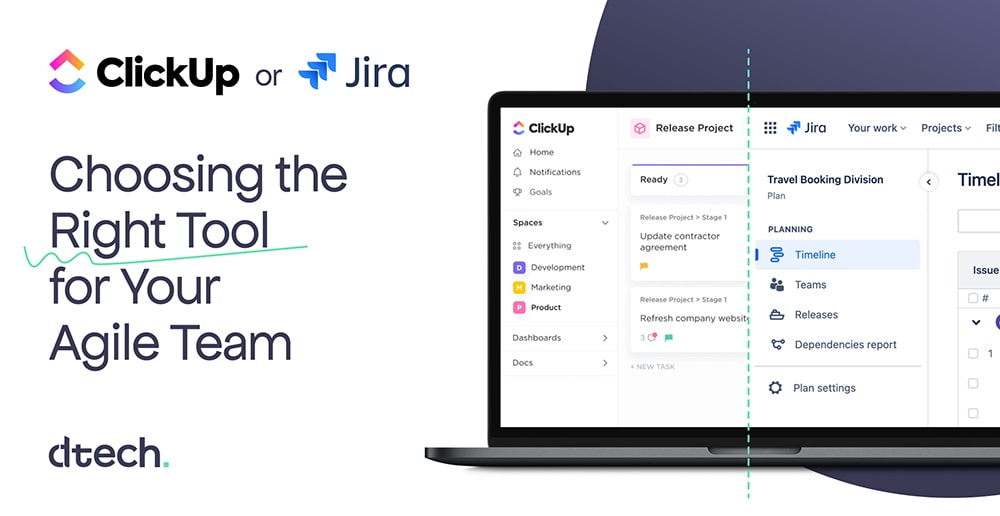Introduction
In today’s fast-paced business world, picking the right project management tool is crucial. ClickUp
and Jira are two popular options, each with its own strengths. This guide will help you understand
which one might work best for your team.
At DTech Systems, we specialize in helping organizations in Saudi Arabia get the most out of
ClickUp. As a verified ClickUp reseller, we offer setup, consulting, coaching, and training services.
Whether you’re a project manager, solopreneur, or company founder, we’re here to support your
success with ClickUp.
Now, let’s take a closer look at ClickUp and Jira:
Overview of ClickUp and Jira
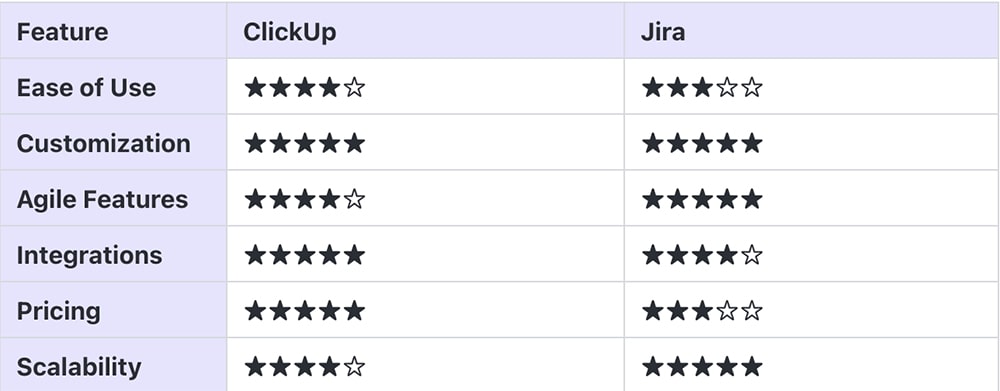
ClickUp Overview
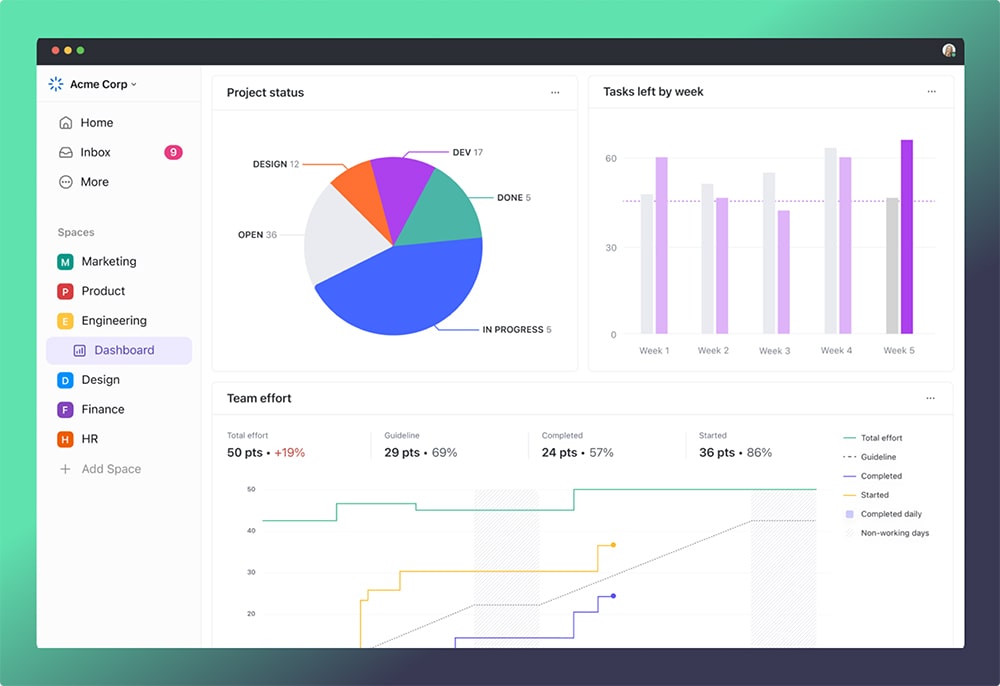
ClickUp is a versatile project management tool designed for various types of work. Here’s what it
offers:
- Customizable workspaces
- Task management features
- Time tracking
- Collaboration tools
ClickUp works well for both small teams and large companies. It’s known for being flexible and
easy to adapt to different workflows.
Jira Overview
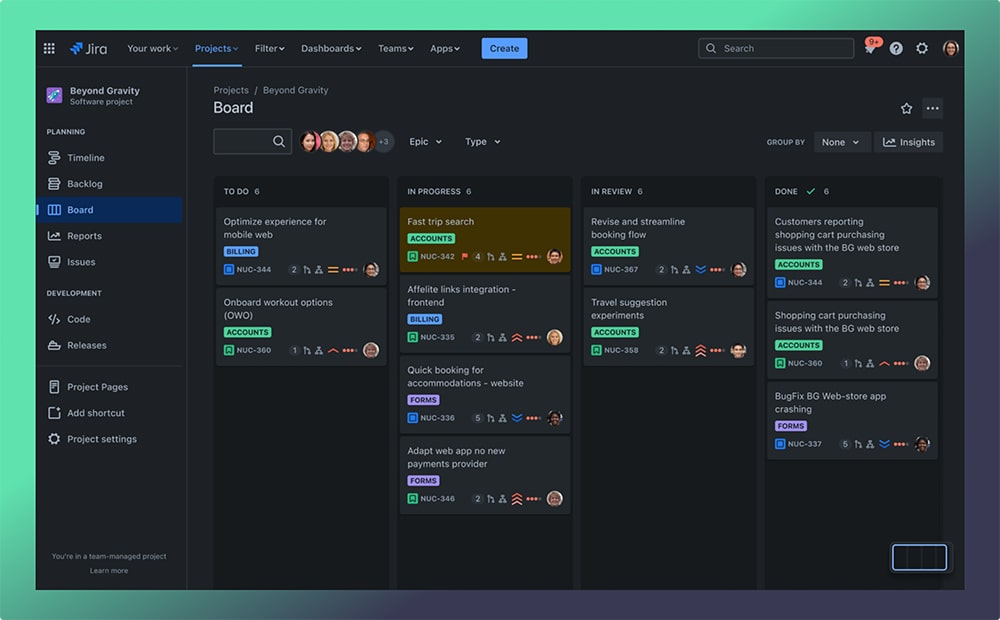
Jira, created by Atlassian, was originally built for software development teams. Its key features
include:
- Agile project management tools
- Issue tracking
- Detailed reporting
- Customizable workflows
While Jira is still most popular with software teams, it has expanded to serve other industries too.
It’s particularly strong in handling complex projects and workflows.
Both tools have their strengths, and the right choice depends on your team’s specific needs. In
the following sections, we’ll compare ClickUp and Jira in more detail to help you make an
informed decision.
Primary Differences at a Glance
While both tools offer project management solutions, they differ in several key aspects:
- User Interface: ClickUp boasts a more modern, intuitive interface, while Jira’s interface can
be more complex but highly customizable. - Flexibility: ClickUp offers more versatility across different project types, whereas Jira excels
in software development workflows. - Learning Curve: ClickUp is generally easier to set up and use out of the box, while Jira may
require more time to master its advanced features. - Integrations: Both offer extensive integrations, but Jira’s longstanding presence in the
market gives it an edge in terms of available third-party apps. - Pricing: ClickUp often comes out as more cost-effective, especially for smaller teams, while
Jira’s pricing can be more complex based on user count and features.
Features Comparison
When it comes to project management tools, features can make or break your team’s productivity. Let’s dive into how ClickUp and Jira stack up against each other in key areas.
Task Management
Both ClickUp and Jira offer robust task management capabilities, but they approach it differently.
ClickUp:
- Offers multiple task views: List, Board, Calendar, Gantt, and more
- Supports nested subtasks for complex work breakdown
- Allows task dependencies and relationships
- Provides custom statuses and fields for each task
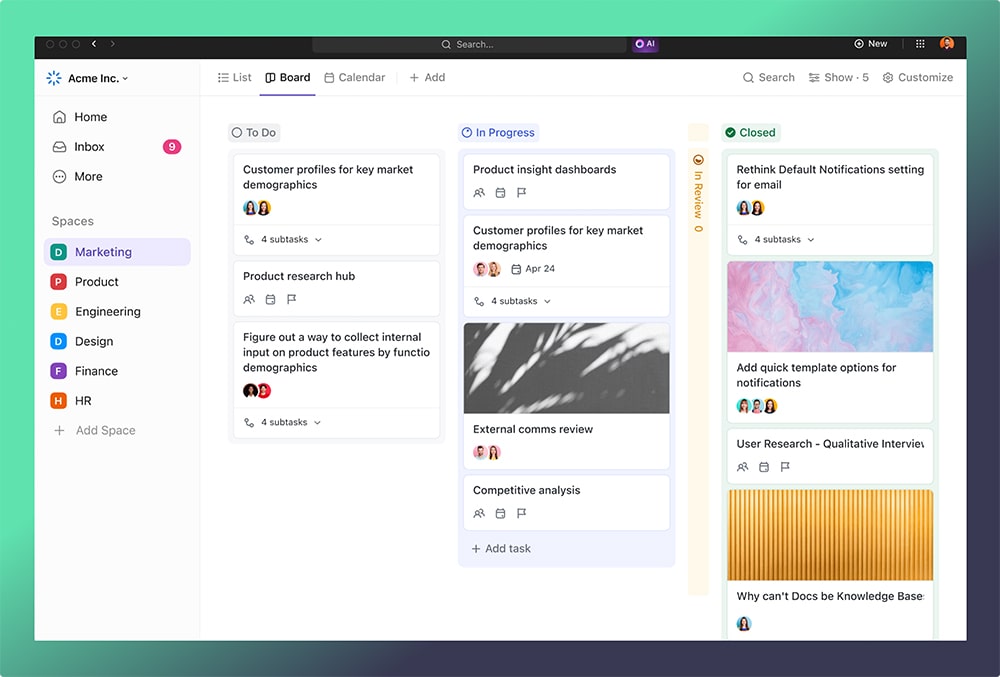
Jira:
- Focuses on issue tracking with a robust ticketing system
- Offers powerful linking between issues
- Provides customizable workflows for different task types
- Includes estimation and time tracking features
Winner: ClickUp. Its versatility in task views and nested subtask feature make it more adaptable for various project types.
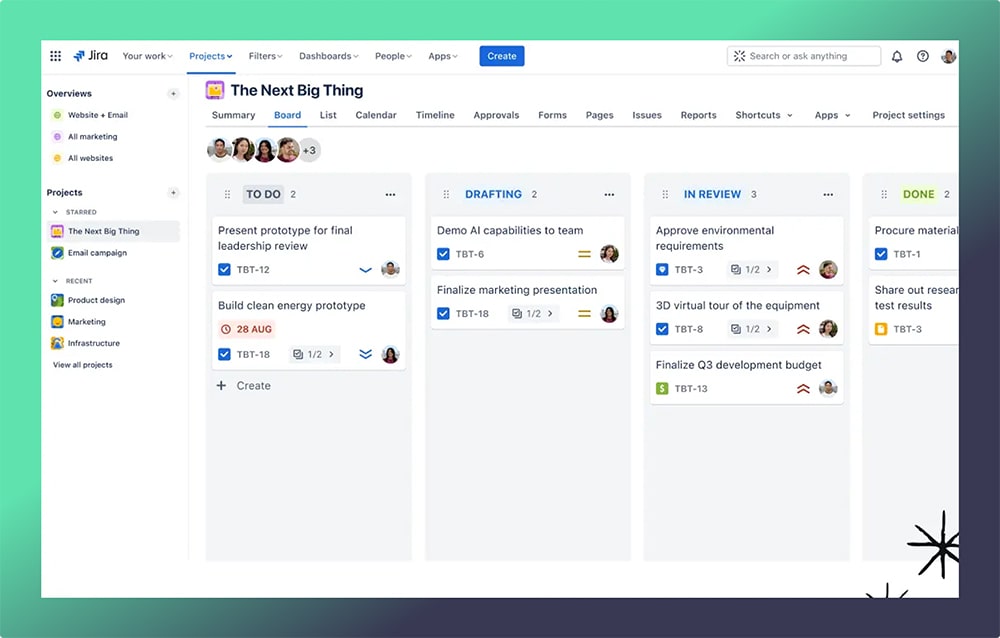
Agile Project Management
For Agile teams, both tools bring strong offerings to the table.
ClickUp:
- Supports both Scrum and Kanban methodologies
- Offers customizable Sprint planning and tracking
- Includes velocity charts and burndown reports
- Allows for hybrid and custom Agile approaches
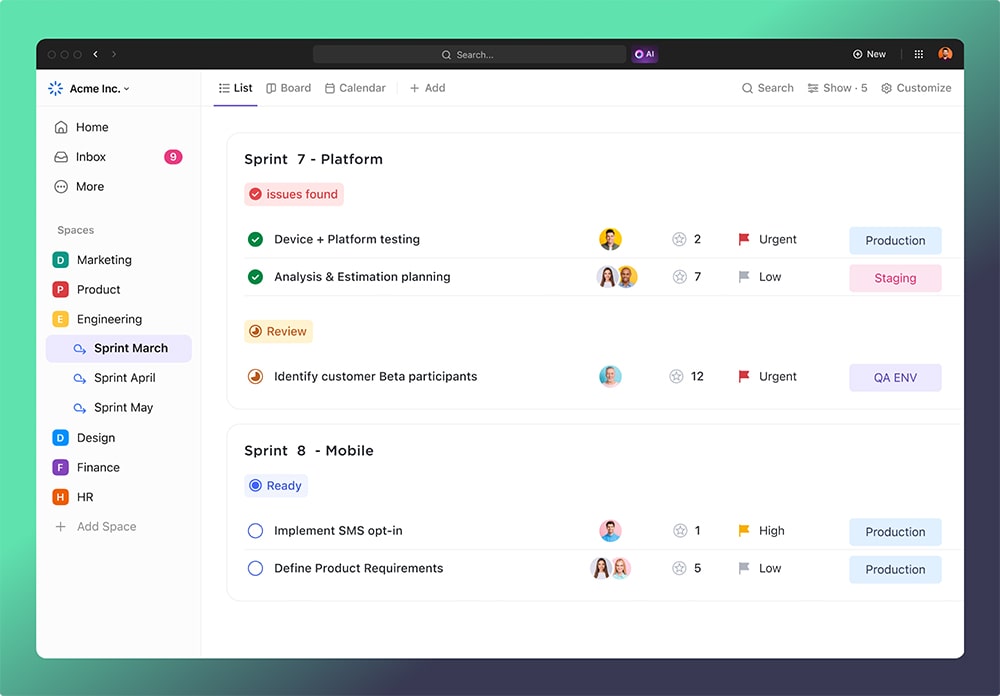
Jira:
- Provides comprehensive Scrum and Kanban boards
- Offers advanced Sprint planning and backlog management
- Includes built-in Agile reporting (burndown charts, velocity, etc.)
- Supports SAFe (Scaled Agile Framework) for enterprise-level Agile
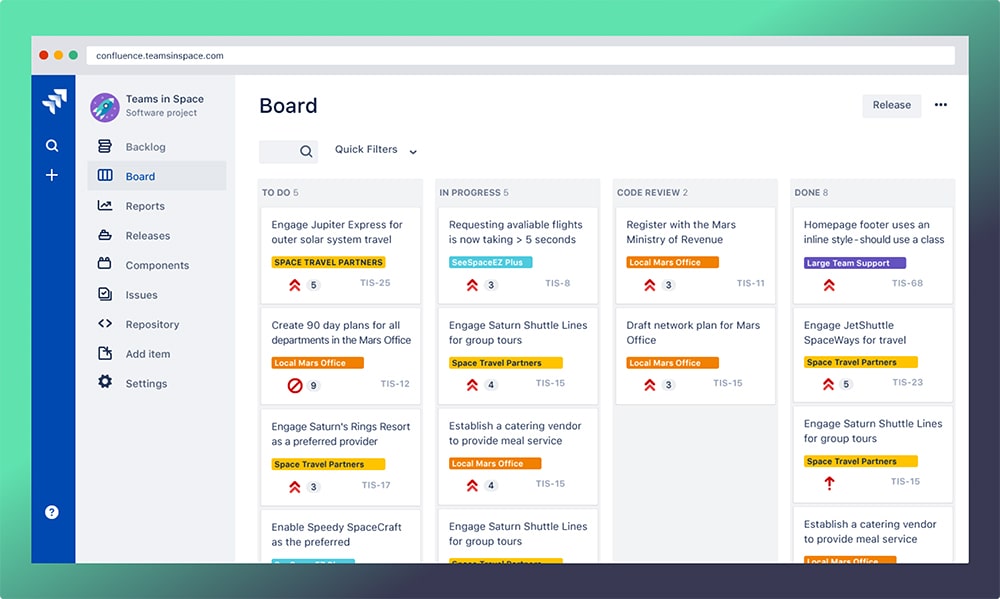
Winner: Jira, by a narrow margin. While ClickUp is highly capable, Jira’s deep roots in Agile software development give it a slight edge for teams fully committed to Agile methodologies.
Reporting and Analytics
When it comes to keeping stakeholders informed, both tools offer strong reporting features.
ClickUp:
- Offers a wide range of pre-built reports (workload, time tracking, etc.)
- Provides customizable dashboards with various widgets
- Includes team analytics and productivity insights
- Allows for easy sharing of reports with stakeholders
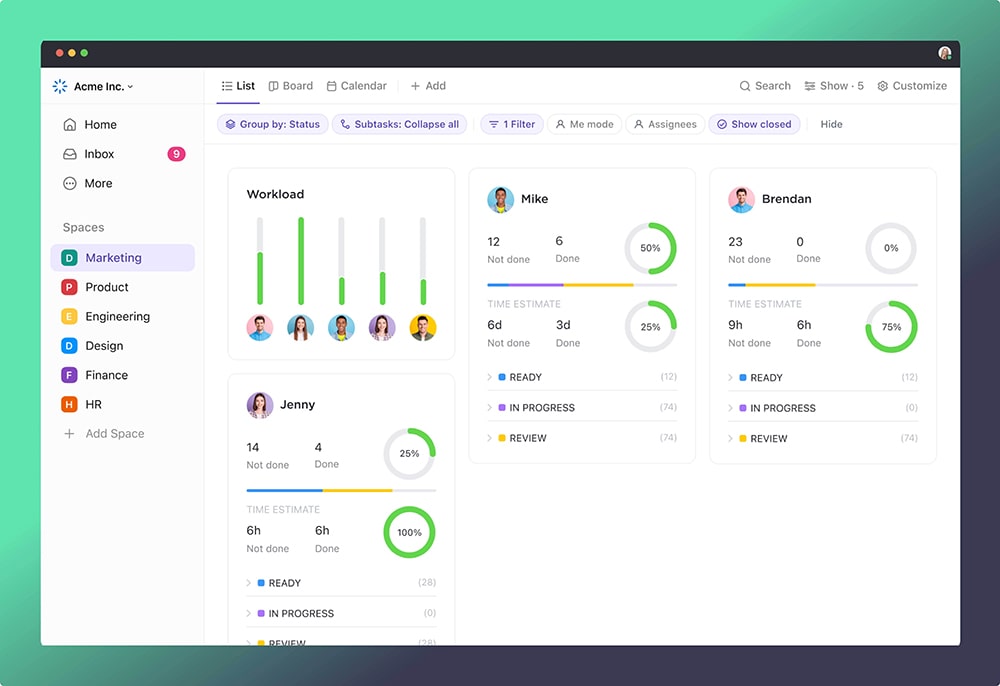
Jira:
- Provides comprehensive Agile reports (sprint reports, release burndowns)
- Offers customizable dashboards and JQL (Jira Query Language) for advanced reporting
- Includes cumulative flow diagrams and other Agile metrics
- Supports third-party apps for extended reporting capabilities
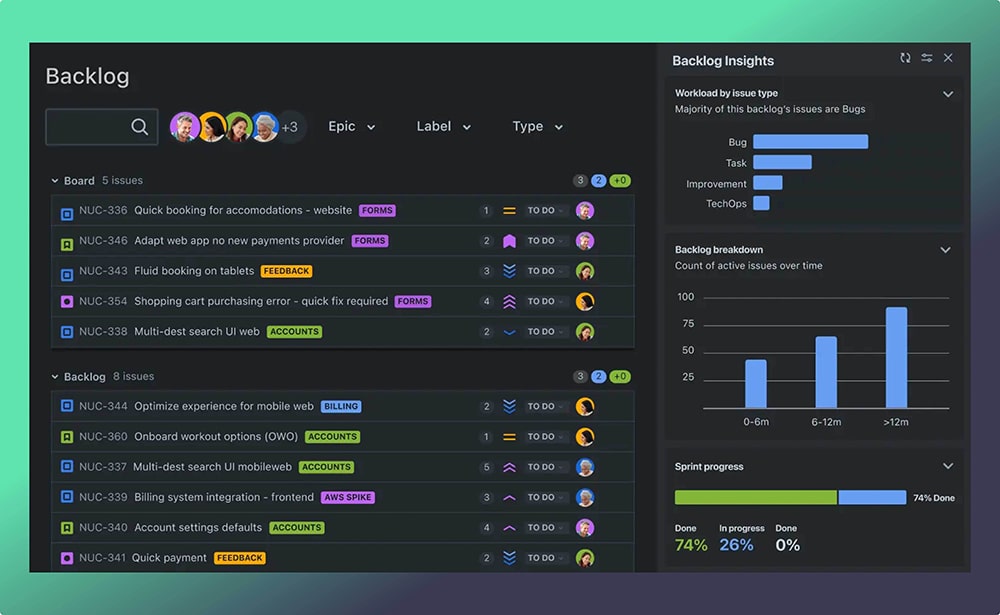
Winner: ClickUp. Its user-friendly approach to creating and customizing reports, combined with a broader range of pre-built options, makes it more accessible for teams of all types.
Collaboration Tools
In today’s remote-first world, collaboration features are more important than ever.
ClickUp:
- Includes built-in chat and comment features
- Offers collaborative document creation with ClickUp Docs
- Provides screen recording and annotation tools
- Supports file sharing and integrations with cloud storage services
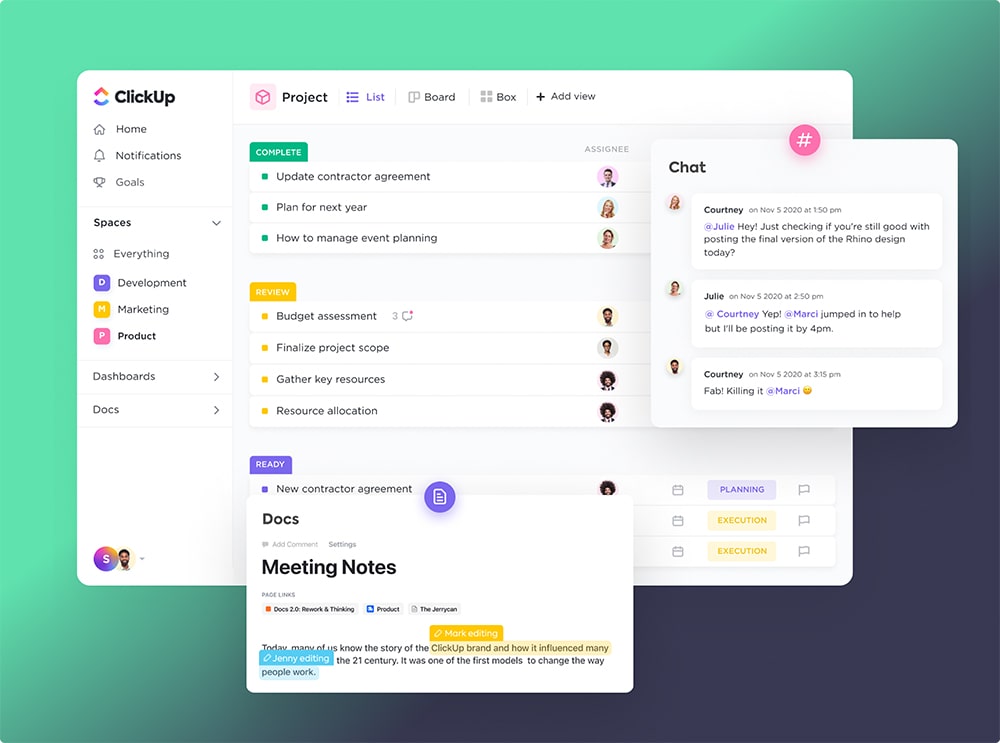
Jira:
- Offers robust commenting and @mentions
- Provides integration with Confluence for document collaboration
- Supports file attachments to issues
- Includes a built-in roadmap feature for high-level planning
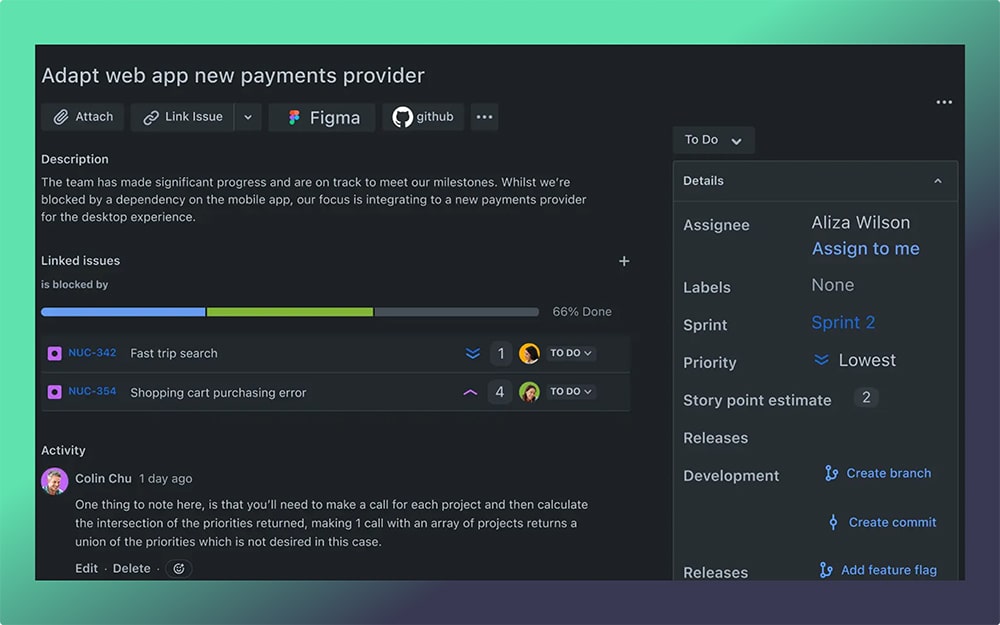
Winner: ClickUp. Its all-in-one approach with built-in chat and document collaboration gives it an advantage for teams looking for a unified platform.
Customization Options
Flexibility can be crucial for adapting a tool to your specific workflows.
ClickUp:

- Allows creation of custom fields, statuses, and tags
- Offers powerful, user-friendly automation features
- Provides customizable views and dashboards
- Supports the creation of custom templates for recurring workflows
Jira:
- Offers extensive workflow customization
- Provides powerful JQL for custom filtering and reporting
- Supports custom fields and issue types
- Offers a marketplace with numerous plugins for extended functionality
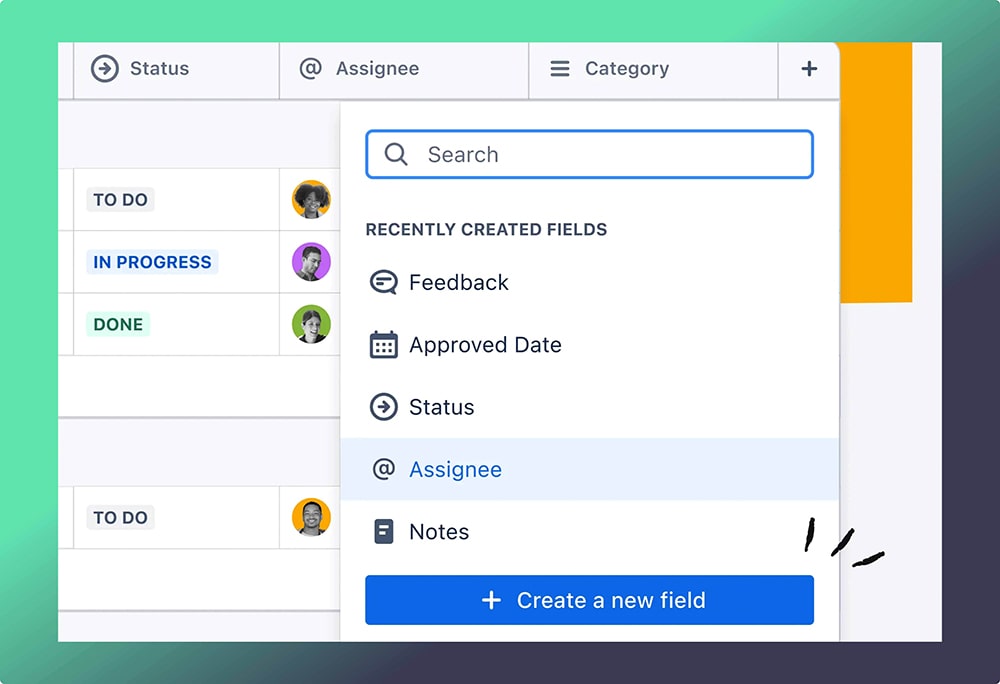
Winner: Tie. Both tools offer extensive customization. ClickUp’s customization is more user-friendly, while Jira’s is more powerful for complex, specific needs.
Overall, while Jira excels in Agile-specific features, ClickUp’s versatility, user-friendliness, and all-in-one approach make it a strong contender for a wider range of teams and projects. The best choice depends on your team’s specific needs and technical expertise.
Pricing and Plans
Understanding the cost structure of project management tools is crucial for making an informed decision. Let’s break down the pricing for ClickUp and Jira:
ClickUp Pricing:
- Free Forever: $0 for unlimited members
• 100MB storage
• Unlimited tasks and basic features - Unlimited: $7 per member/month (billed annually)
• Unlimited storage
• Unlimited integrations
• Advanced features like Gantt charts and custom fields - Business: $12 per member/month (billed annually)
• All Unlimited features
• Advanced automation and workload management - Business Plus: $19 per member/month (billed annually)
• All Business features
• Team sharing, custom exporting, and advanced permissions - Enterprise: Custom pricing
• All Business Plus features
• Enhanced security and support
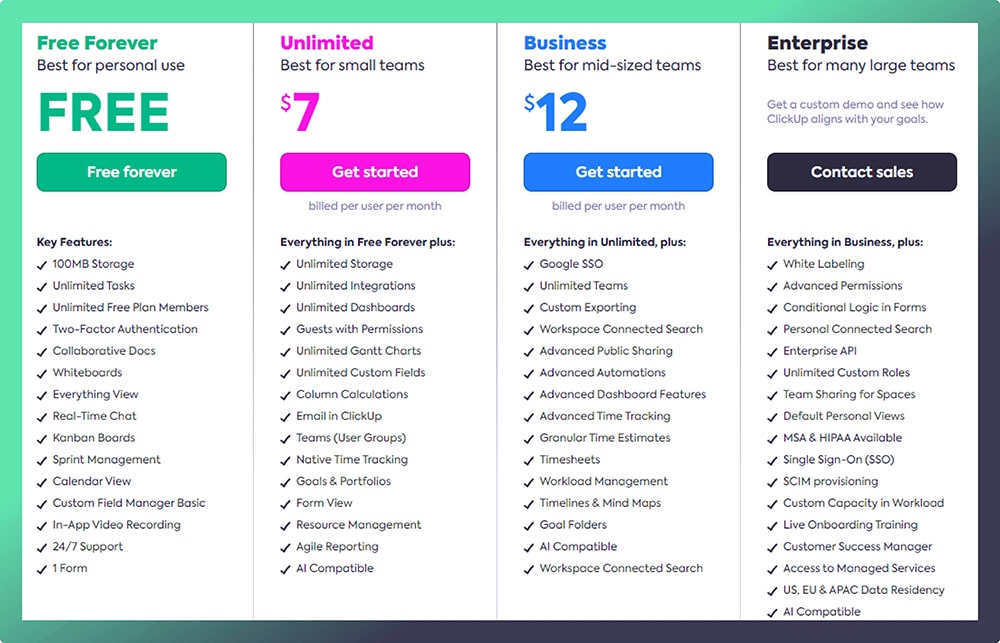
Jira Pricing:
- Free: $0 for up to 10 users
• Basic features and Scrum/Kanban boards - Standard: $8.15 per user/month (unlimited users)
• Advanced permissions and anonymous access - Premium: $16 per user/month
• Unlimited storage and advanced roadmaps - Enterprise: Custom pricing
• Enhanced security and support features
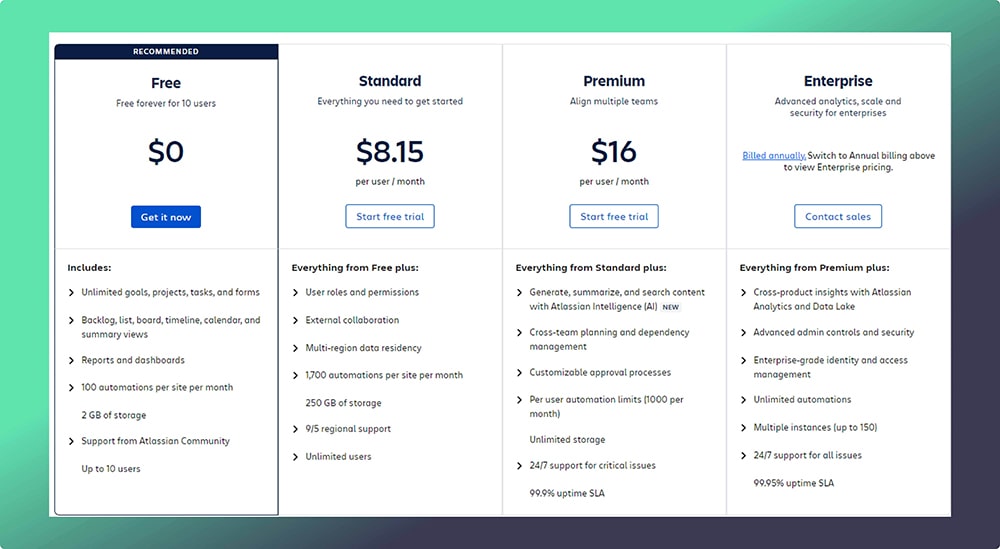
Cost Comparison:
For small teams (1-10 users): ClickUp’s free plan offers more features than Jira’s, making it a better value for small teams or startups.
For medium-sized teams (11-100 users): ClickUp’s Unlimited plan at $7 per user/month is more cost-effective than Jira’s Standard plan at $8.15 per user/month.
For large enterprises (100+ users): Both platforms offer custom Enterprise pricing, but ClickUp’s Business plan at $12 per user/month might be more attractive than Jira’s Premium plan at $16 per user/month for teams that don’t need Jira’s specific enterprise features.
Value for Money: ClickUp generally offers better value for money, especially for small to medium sized businesses. Its free and lower-tier plans provide more features compared to Jira’s equivalents. However, for large software development teams deeply invested in the Atlassian
ecosystem, Jira’s specific features might justify the higher cost.
Integrations and Compatibility
In today’s interconnected work environment, the ability to integrate with other tools is crucial.
Let’s examine how ClickUp and Jira fare in this aspect:
ClickUp Integrations:
ClickUp offers over 1,000+ integrations, including:
- Productivity tools: Slack, Google Workspace, Microsoft Office 365
- Development tools: GitHub, GitLab, Bitbucket
- Time tracking: Toggl, Harvest
- Customer support: Zendesk, Intercom
- Marketing: Mailchimp, HubSpot
ClickUp also provides a Chrome extension and mobile apps for iOS and Android, ensuring accessibility across platforms.

Jira Integrations:
Jira, being part of the Atlassian ecosystem, offers robust integrations:
- Native integrations with Atlassian products like Confluence and Bitbucket
- Over 3,000 apps available in the Atlassian Marketplace
- Popular integrations include Slack, GitHub, Jenkins, and Salesforce
- Strong API support for custom integrations
Jira also offers mobile apps and browser extensions for seamless workflow.
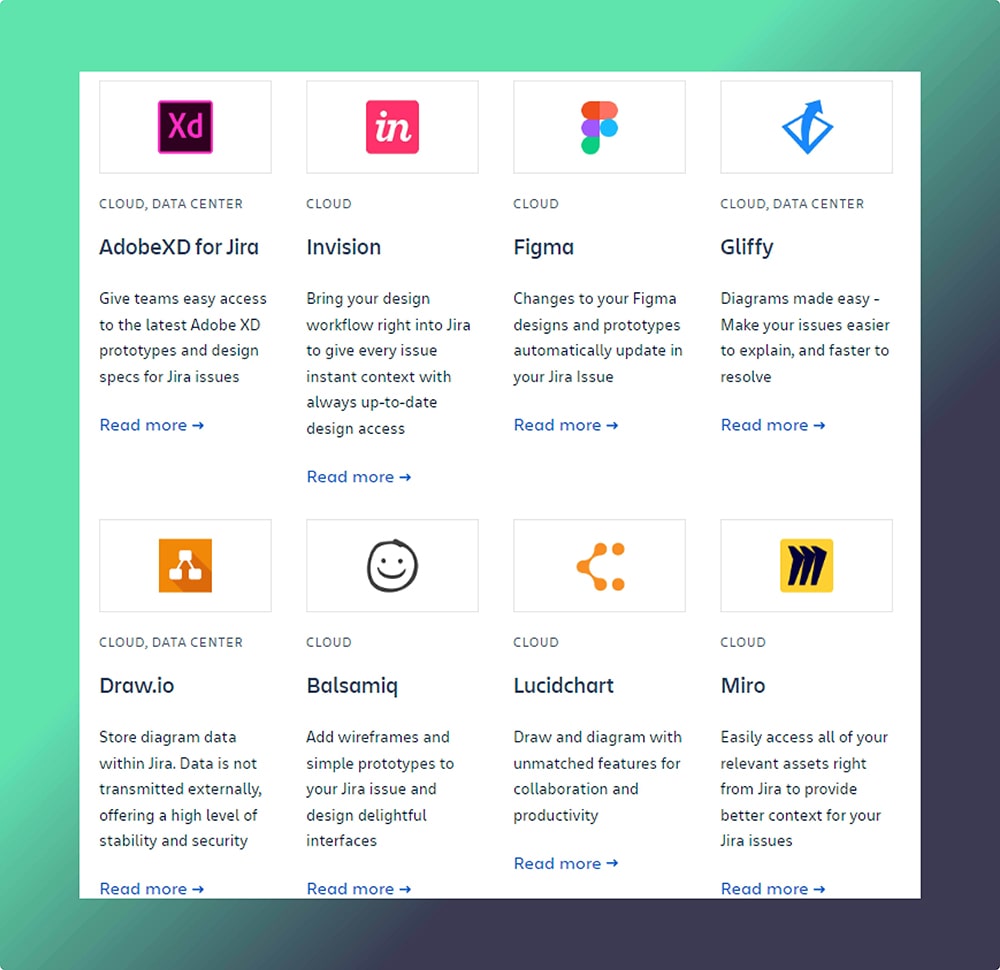
Integration Flexibility for Agile Teams:
When it comes to integrations, both ClickUp and Jira bring their A-game, but they shine in different areas:
ClickUp:
ClickUp takes the cake for user-friendliness and versatility. With over 1,000 native integrations, it’s like a playground for Agile teams who love to mix and match their tools. Need to connect your favourite time tracker or that nifty design tool? Chances are, ClickUp’s got you covered with just a few clicks. This plug-and-play approach is a godsend for teams who want to hit the ground running without getting bogged down in technical setups.
Jira:
Jira, on the other hand, is like the elder statesman of the project management world. Its integration game is strong, especially if you’re already swimming in the Atlassian pool. With a marketplace boasting over 3,000 apps, Jira’s integration possibilities are vast. For teams that need to create bespoke workflows or have very specific integration needs, Jira’s robust API is like a blank canvas for your wildest integration dreams.
The Verdict
For most Agile teams, especially those who value simplicity and quick setup, ClickUp is the way to go. Its wide array of ready-to-use integrations means you can create your ideal workflow without breaking a sweat.
However, if your team is deeply entrenched in the Atlassian ecosystem or you need highly specialized integrations (we’re looking at you, enterprise software teams), Jira might be your better bet.
In the end, both platforms offer solid integration capabilities. ClickUp wins on ease of use and out-of-the-box functionality, while Jira takes the crown for customization and depth of integration possibilities. Your choice depends on whether you prefer a smooth, quick setup or the potential for deep, custom integrations.
Ease of Use and User Experience
User Interface
ClickUp’s interface is modern and visually appealing. It offers a customizable dashboard with various views (List, Board, Calendar, Gantt, etc.), allowing users to switch between different project perspectives easily. The UI is intuitive, with a clean layout that doesn’t overwhelm users with too much information at once.
Jira’s interface, while functional, can be more complex, especially for new users. It’s designed withsoftware development teams in mind, which means it can be feature-rich but potentially overwhelming for non-technical users. However, recent updates have improved its userfriendliness.
Learning Curve
ClickUp generally has a gentler learning curve. Its interface is more intuitive, and many features are self-explanatory. New users can often start creating tasks and projects within minutes of signing up.
Jira typically has a steeper learning curve, especially for teams not familiar with Agile methodologies. Its wealth of features and customization options can take time to fully understand and utilize effectively.
Customer Support and Resources
Both platforms offer extensive support and resources:
ClickUp provides:
- 24/7 customer support
- Comprehensive knowledge base and video tutorials
- Active user community forums
- Regular webinars and training sessions
Jira offers:
- Extensive documentation and Atlassian University courses
- Large community forums
- Premium support options for higher-tier plans
- Certified consultants and partners for implementation
While both platforms provide robust support, ClickUp’s resources are generally more accessible
for non-technical users
Performance and Reliability
Server Uptime and Performance
Both ClickUp and Jira boast high uptime rates, typically above 99.9%. However, as with any cloudbased service, occasional outages can occur.
ClickUp has shown consistent performance, with quick load times even for large projects. They regularly update their status page with real-time performance metrics.
Jira, being a more established platform, has a proven track record of reliability. Its performance
can vary depending on the instance (cloud vs. self-hosted) and the level of customization.
Security Features and Data Protection
ClickUp offers:
- SOC 2 compliance
- GDPR compliance
- Two-factor authentication
- Encryption at rest and in transit
Jira provides:
- SOC 2, SOC 3, and ISO 27001 compliance
- GDPR compliance
- Advanced permission settings
- Enterprise-grade security features for higher-tier plans
Both platforms take security seriously, but Jira’s longer market presence has allowed it to develop
more advanced security features, especially for enterprise clients.
Scalability
ClickUp is designed to scale from individual users to large enterprises. Its flexible structure allows teams to start small and expand as needed without major restructuring.
Jira has proven scalability for large organizations, especially in the tech sector. It can handle thousands of users and complex project structures, though this might require more setup and management.
Conclusion and Recommendation
Choosing between ClickUp and Jira ultimately depends on your team’s specific needs, size, and technical expertise.
ClickUp is an excellent choice for:
- Small to medium-sized businesses
- Teams that need flexibility across various project types
- Organizations looking for an all-in-one solution
- Teams that value ease of use and quick onboarding
Jira is better suited for:
- Software development teams
- Large enterprises with complex workflows
- Organizations heavily invested in the Atlassian ecosystem
- Teams that require advanced Agile project management features
Both platforms offer free trials, and we highly recommend taking advantage of these to test which tool aligns best with your team’s workflow and needs. Remember, the best project management tool is the one that your team will actually use consistently.
For those interested in exploring ClickUp further, DTech Systems offers comprehensive setup, consulting, and training services to help you maximize the platform’s potential for your organization. Don’t hesitate to reach out to us for personalized guidance in implementing ClickUp for your team.


